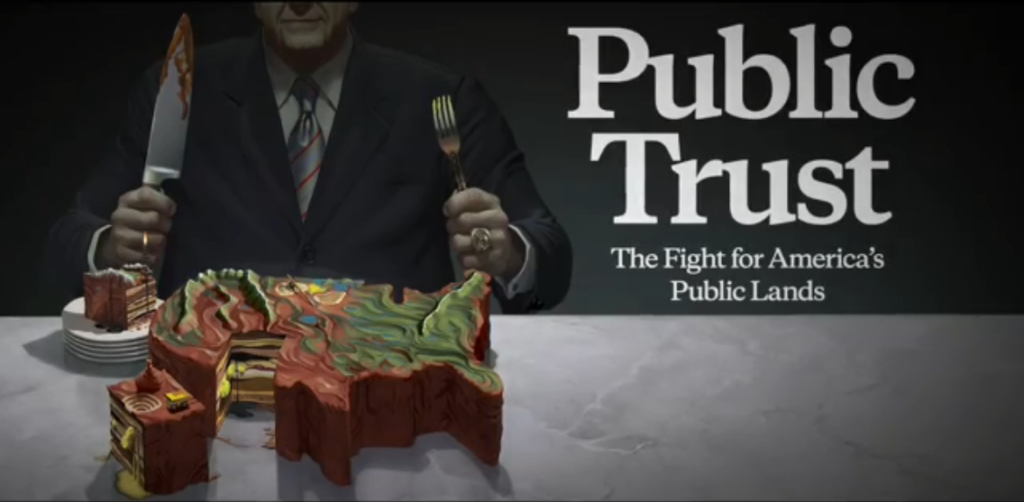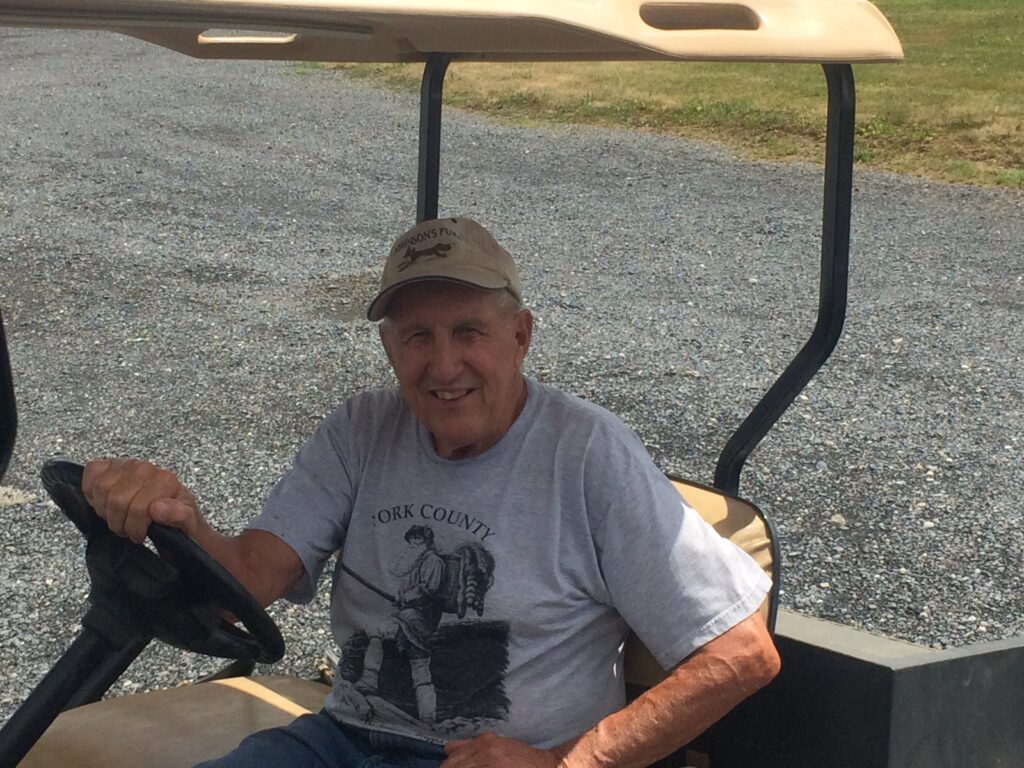Posts Tagged → trapping
Jerry Johnson & Johnson’s Furs
A fascinating and wonderful human named Jerry Johnson went to meet his Maker recently, and I would like to say why I am going to miss him so much.
Jerry founded and ran Johnson’s Furs in Enola back in the 1960s. Initially started to just buy, aggregate, and re-sell wildlife furs from foxes, coyotes, bobcat, mink, skunk, possum, raccoons etc., Jerry expanded the business to encompass everything possibly related to furs, like annually buying hundreds of thousands of deer and cattle hides, selling Hawbaker and Carman trapping lures, foothold traps, cage traps, Conibear-style traps, snares, cable restraints, and all of the steel fittings that go with those implements.
Jerry’s inspiration and logistical support came from the number one person in the trapping business back then, Stanley Hawbaker. A central Pennsylvania native, nationally recognized trapping expert and proponent Stanley Hawbaker was most active during the heyday of fur trapping, and he designed trapping lures and baits that are still in high demand today. Despite being a competitor for trappers’ business, Hawbaker saw in Jerry Johnson a rare opportunity to expand the trapping industry beyond its narrow focus at that time. And so Johnson’s Furs grew into a regional powerhouse.
I interviewed Jerry Johnson several times over the past fifteen years, and each time was fascinating. He and I were supposed to get together for some video interviews this spring, but his declining health prevented him from getting out or from talking for more than a few minutes. One of our most interesting times together was in his newly reconstructed log cabin, about five years ago.
The benefits enjoyed from Jerry’s incredible energy included having a one-stop shop for buying everything a trapper needs, as well as being able to drop off both pelts and whole critters. Johnson’s correctly processed everything brought in, and dealt with all of the big tanneries. During my last discussion with Jerry, just a few months ago, when I dropped off a huge elk hide for tanning, he reflected on the fact that only one tannery remains in eastern America that can tan an elk hide. He said he had witnessed the explosive growth of the hide and trapping industries in the 1960s and 1970s, and then had lived to see their eventual retraction and maybe even the demise of the cattle and deer hide businesses.
Jerry Johnson was the nicest person you would ever meet in your life. He was kind, patient, funny, and friendly. Like almost everyone of his generation in Central Pennsylvania, he did not know the word “quit,” and he worked very hard and long hours well into his 80s. And his prices were fair to the point of sometimes being unfair to him. When I ran for public office, he put my brochures up in the office and talked me up to interested voters.
Every year for a long time the District 8 PA Trappers Association held a Jerry Johnson Appreciation Lunch. Because it was on a Saturday and during the heart of hunting season, I never could participate. But Jerry knew I appreciated him because I told him so, so many times, over so many years of buying trapping equipment from him and having him process my furs.
I could write a short book here about what Jerry told me, about his youth, his education, his family, and his small business work. Maybe some day I will write a chapter about Jerry, but for now this is what I have to say: He was one of the last of a dying breed of Americans who grew up working hard, with his family, and who worked hard up until his death in his 80s. Jerry enjoyed and loved America and his fellow Americans, and never asked for more than a fair shot at doing business.
Among many other of your fans, I will miss you, Jerry Johnson. I will miss your advice, your quick smile, your quick wit, your outstanding service, and your kind personality. Thank you for all you did for me and my son, and for countless other trappers in the region.
U.S. Sportsmen must vote gun rights next week
[A version of this essay was published by the American Thinker at https://www.americanthinker.com/blog/2020/10/american_sportsmen_must_vote_gun_rights_next_week.html ]
It is not news to anyone who cares about American liberty that guns of every sort, caliber, style, color, and design have been in the crosshairs of anti-gun activists for decades. It is no stretch to describe these anti-gun activists as totalitarians-in-waiting, because their ultimate goal is complete civilian disarmament, which results in only one thing: Tyranny. Yes, even black powder muzzleloading rifles are targeted by gun grabbers, even though the last time an American was hurt by one was when someone took one off the mantel and dropped it on their toe.
Anti-gun activists are especially seeking “universal background checks,” because that process would allow them to build up the kind of individual firearm owner database they need now to do the door-to-door gun confiscation they dream of later on. But on this subject they keep running up against a political and legal buzz saw from the National Rifle Association, Gun Owners of America, Firearms Owners Against Crime, and various state rifle and pistol associations. And so now gun grabbers are going after the one chink in the gun owners’ armor, what they see as the weakest link in the gun owners chain, and that is America’s sportsmen.
Sportsmen are an unusual demographic group of mostly political moderates, super-voters who cherish clean waterways, support land trusts and coastal conservation organizations, and who also cling strongly to their often basic hunting guns. Sportsmen are mostly not the AR15 “black rifle” tactical crowd, and that has made them especially interesting to the gun grabbers.
And so an effort is afoot to convince American hunters, trappers, and recreational fishermen that the most important issues they must vote for and about next week are the environment and public lands. And we all know how that mantra goes: Republicans are bad, and Democrats are good, which translates into Trump Bad, Biden Good. Never mind that most environmental groups are partisan Democrat Party activism centers who use the environment as their excuse to make war, now there are fake sportsmen’s groups and fake gun owner’s groups.
When you dig just a bit under the thin veneer of these groups’ “we are wholesome sportsmen and gun owners just like you” message, what you find is no surprise. They are each just yet one more phony, politically partisan, anti-gun concoction that camouflages itself as something else. Several anti-gun groups in particular are targeting sportsmen with deceptive behavior. The Union Sportsmen’s Alliance and Gun Owners for Safety are chock full of people professing to be ardent gun owners, but who nonetheless inevitably cite the same garbage anti-gun “studies” and who inevitably promote draconian anti-gun policies as “fair,” and “common sense” etc. These fake groups are as easy to spot as phonies as is a pheasant breaking thirty yards out against a clear blue Fall sky.
But a third group that is really gaining traction among sportsmen is Backcountry Hunters and Anglers, and they much more carefully, perhaps artfully, straddle the natural mix of environmental quality and gun ownership interests that sportsmen have. And BHA is strident this year about voting on environmental issues alone, to the exclusion of gun rights. Its president, a guy actually named Land Tawney, has a long association with Barack Obama and Democrat Party activism. BHA is partnering with Patagonia clothing company, which has underwritten and promoted a movie called Public Trust: The Fight for America’s Public Lands. This movie is the centerpiece of BHA’s get-out-the-vote efforts this year.
Public Trust is done in a documentary style, narrated by Hal Herring, a long-time writer for Field & Stream magazine. The movie is masterful and has great cinematography. But it is not always accurate, especially in claims about so-called climate change and hanging every environmental problem and cause around the neck of – you guessed it – Republicans and the Donald Trump Administration. Public Trust also plays the usual environmentalist game of presenting false choices. For example, water quality concerns about the proposed Twin Metals copper mine in Minnesota could be addressed through posting a sufficient cleanup bond, but that would negate all the opportunities for political drama that liberals want.
If President Trump’s political opponents forget to mention that he signed the Great American Outdoors Act just a few months ago, allow me to remind them. The GAOA funded the Land and Water Conservation Fund for the first time since human-caused “climate change” was just a twinkle in Al Gore’s eye. GAOA funded national and local parks and forests operations and maintenance backlogs, infrastructure needs, and a host of other conservation and public lands needs from sea to shining sea. Trump is not an evil anti-environment boogey man, but Joe Biden certainly is an ardent gun-grabber, and his inner circle is a constellation of anti-trapping and anti-hunting groups.
Next week, American sportsmen cannot afford the luxury of voting for anything but Second Amendment rights. Without our guns, there is no sporting tradition, period, so vote for President Donald J. Trump. See you in the field afterwards!

Patagonia clothing company has this confusing message posted on its website. See, to me, a “climate denier” is a “science believer” and a human-caused climate change proponent is at best a gullible fool hyped up on a political cause that has no science in it, behind it, around it.

Who knows where Patagonia got this smokestack city photo, but if it is in America, the white emissions are probably steam. Which is water. Which is not a pollutant. To try to sell this as a picture of commonplace industrial pollution, Patagonia and BHA want viewers to believe we are really living in 1968.

A greedy white man in a suit, carving up parts of America for dinner with his cruel, bloody chef knife. A part of my experience tells me there is a grain of truth to this propaganda, because it is true that America’s natural resources have been utilized for three hundred years. Including now by the Crow Indian tribe on tribal lands, thanks to President Donald Trump.
Wild fur makes the best clothing
Wild-caught salmon is a big treat, especially for those inclined to support sustainable fisheries. It is so special it is sold in boutique stores with pink ribbons tied in a bow, and all kinds of fancy messages to its end-users.
People feel good and righteous about eating wild caught salmon, because many salmon farms are not sustainable.
Similarly, wild-caught fur is the best clothing material you can obtain. It is far more beautiful than anything humans can create.
Wild caught fur is natural, not synthetic, so there is no industrial pollution associated with it.
Wild caught fur is a renewable resource, especially where ugly sprawl development has created the unfortunate conditions for predator populations to artificially grow and succeed beyond the surrounding habitat’s carrying capacity. In these suburban populations, trapping is a necessity, especially with raccoons, possums, skunks, fox and coyotes, all of which are exploding in number and tremendously damaging native song bird populations, among other native species.
In any case, wild animals naturally procreate and renew themselves, and all furbearer animals are carefully managed by professional wildlife biologists, who ensure that none are taken that the population cannot sustain.
Wild caught fur is biodegradable. It rots when it is used up, and it returns to its natural constituent parts, becoming soil over time. Contrast this to synthetic clothing, which is made from petrochemicals and industrial pollution, and which remains household waste and then environmental pollution for the next ten thousand years.
Finally, wild caught fur is sustainable. There is not one animal trapped for its fur anywhere in North America that federal or state biologists believe is at risk. Not one animal trapped for its fur in North America is going extinct, at risk of going extinct, or is piquing the concerns of biologists in Canada or America. Sustainable wild caught fur includes wolves, fox, marten, lynx, bobcat, fisher, otter, beaver, and of course raccoon, possum, coyote, mink, and others.
One former staple furbearer is having trouble, and that is the muskrat. For whatever environmental quality reason (likely improved water quality, of all things), muskrat populations are having terrible problems across North America. As a result, some states are carefully studying them. Trapping has a negligible impact on their overall populations.
Another animal that is not at all rare or endangered, but which has been purposefully politicized by people opposed to all trapping is the lynx. Lynx populations from Canada to Alaska are in fine shape.
Lynx do not really live south of the Canadian border, because the habitat conditions here do not support lynx. However, south of the border, primarily in Maine, lynx are treated as if they are the last remaining examples of their species, and they are now heavily protected.
Lynx are the proverbial tail wagging the trapping dog in Maine. Though silly beyond imagination, newly required lynx exclusion devices have all but ended trapping in Maine. As a result of this silliness, there are certain song birds and native ground-nesting bird species that absolutely will become threatened or endangered, because all of the exploding predator populations no longer being trapped there. Those predators are very hungry and very efficient hunters.
This unintended result from stopping trapping in Maine proves that anti trapping activists do not care about wildlife. Rather, they substitute their sad, sad cartoon-like emotions for logic, reason, and careful thinking. Prohibiting all trapping is their goal, and whatever bad things happening afterwards is of no concern to them. Cute little piping plover birdies on Cape Cod or Long Island will just have to go extinct so the anti trappers can feel good about themselves.
Rest assured, trapping wild caught fur is not cruel, it is not barbaric, it is not mean, it is not sadistic, it is not dangerous to people or pets.
Aside from being a natural part of wildlife death, with modern traps and techniques (offset jaws, lots of swivels), trapping is almost always a humorous contrast between what is said about it by trapping opponents on the one hand, and the calm, relaxed reality waiting for the trapper when she checks her traps the next day, on the other hand.
Buy some wild fur yourself. Wear it with pride.
If you care about environmental quality, and if you care about cute little birds on the seashore, or turtles trying to lay their eggs, or cute little fawn deer trying to learn to walk in their first few days, then you will wear your wild caught fur with joy, knowing that your purchase creates the demand for more wild fur garments, and that healthier wildlife populations result.
It is a neat chain reaction, and you can feel good about it all the way around.

